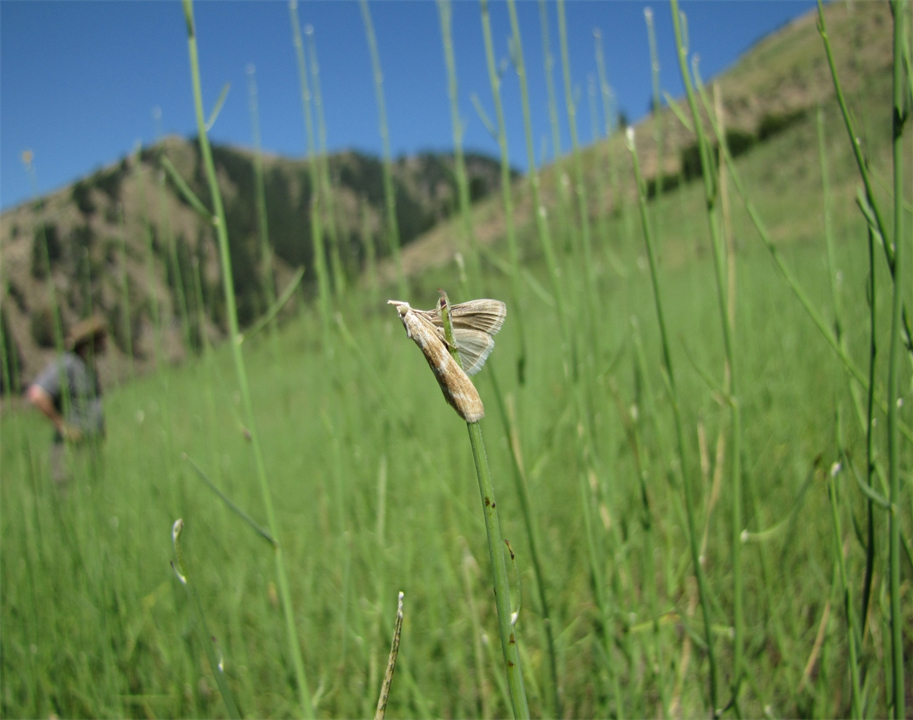BLM Idaho Weeds and Invasives
Noxious weeds are invasive exotic plants designated by the State of Idaho as being hazardous to public health, the environment or the economy. Idaho has 67 noxious weeds.
Invasive species introduced to Idaho affect plant and animal communities on farms, ranches, parks, waters, forests, natural areas and in backyards. Human activity such as trade, travel, and tourism have all increased substantially, escalating the speed and volume of species movement to unprecedented levels. That’s why as Idahoans we must take care about the invasive species we allow to move into and around our state.
Invasive species cost Idaho millions of dollars in control and management each year. Science and common sense tell us it’s cheaper and more effective to prevent invasive species invasions than to manage them once established. It’s important to focus our limited resources on preventing invasions or treating to remove them early in the invasion cycle.
Many noxious weeds are highly competitive and have the ability to permanently degrade Idaho’s native plant communities. New infestations can spread from increasing human activity and increased site vulnerability from more wildfire and other disturbances is an ongoing challenge to maintaining the integrity of our native plant communities and the values they provide us.
Not surprisingly, noxious weeds and other invasive species expansion (particularly cheatgrass and medusa wildrye) are recognized as the single greatest threat to our native plant communities.
A successful noxious weed control program is essential to maintaining the health of our native landscapes and consists of the following goals:
- Prevention of weed establishment.
- Early detection and rapid eradication of new weed infestations.
- Stabilization and rehabilitation of disturbed areas.
- Integration of weed management measures into land management actions/authorizations.
- Implementation and monitoring of weed control measures.
- Adaptive management for controlling new weed species and use of new and approved treatments.
Partnership
Plants don’t adhere to land ownership boundaries, so partnerships are essential for successfully controlling weeds at the landscape level. Idaho’s 33 Coordinated Weed Management Areas form a partnership of federal, state, and local government agencies, tribes and landowners to set common goals and pool resources to effectively manage noxious weeds across Idaho. BLM-Idaho provides financial assistance to 32 counties.
BLM's Regional Biological Control Program, in coordination with the State of Idaho, has been instrumental in successfully promoting biocontrol throughout the Great Basin for effectively combating noxious weed invasion of sagebrush steppe communities.
Project Story
Meet Joey Milan, BLM's Regional Biological Control Specialist
Joey has an MS entomology from the University of Idaho and has been working with regional partnerships on bio-control since 2006 as BLM's Biological Control Specialist. At his present post, he serves as the interagency coordinator for biological control, assisting weed control practitioners throughout the west in their Integrated Pest Management approach by providing technical assistance and monitoring of past releases as well as organizing new collections and additional potential release sites.
Where do you work and how does your job help fulfill the BLM mission?
My job is to promote biological control throughout the Great Basin region to effectively combat noxious weed invasion of our sagebrush steppe communities. Biological control reunites invasive plants with their ""natural enemies"" to restore natural controls and reduce dominance of invasive plants within the plant community. These efforts can have substantial implications for sage-grouse habitat management.
What previous experience/education prepared you for the job?
I have a B.S. in Biology and an M.S. in Entomology with a focus on biological control. My education combined with 14 years of service on BLM lands and numerous meetings and symposiums have supplied me with the tools necessary to see invasive species problems on landscape levels and solutions to fix those issues over time.
Milan studies and works with species such as this root moth (Bradyrrhoa gilveolella), which feeds on rush skeletonweed, an aggressive invasive weed species.
What is the best part of your job?
I get to work in an arena that dabbles in academia and implementation on the ground. The cooperators in my field are second-to-none and I get to spend significant amounts of time in the field. The best part about my job is seeing success occur on the ground. To walk into an area that was previously 100% leafy spurge cover and see perennial grasses and forbs three years later is gratifying beyond words.
What is the most challenging part of your job?
The most challenging part of my job is getting the word out that this program exists and is successful. Aside from that, it is difficult waiting for the new agent approval process, conducted by the USDA's Animal and Plant Health Inspection Service (APHIS), which examines the research for each agent and approves or denies the use of potential new biological control agents. (APHIS is the lead agency for collaboration with other agencies to protect U.S. agriculture from invasive pests and diseases.)
What brought you to the BLM?
I grew up enjoying public lands and the wide open space they provide. I started college with a pre-med mindset, but quickly changed my focus with the guide of several key professors and an adviser that recognized that I preferred to study ecology over microbiology. The rest fell into place nicely and now I have what I believe to be the best job in the BLM.

